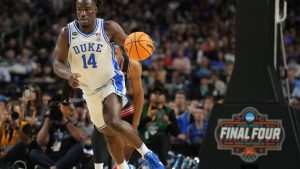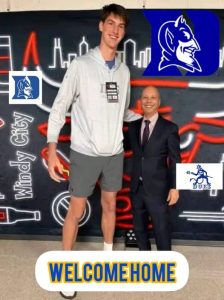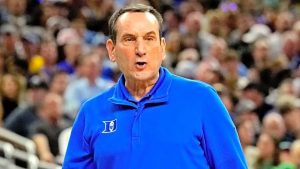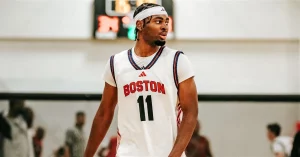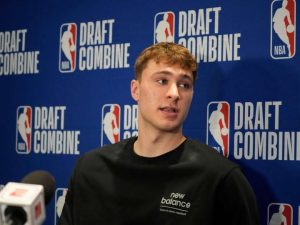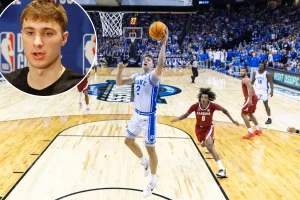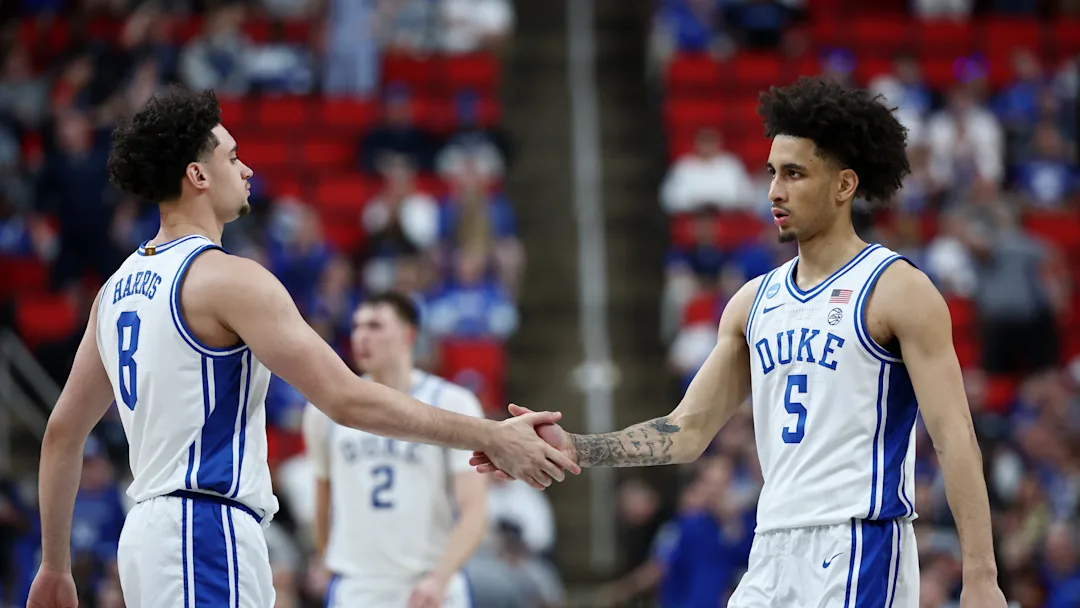
In an era where the top college basketball freshmen often bolt for the NBA after just one season, the announcement from Duke’s standout freshman choosing to return to Durham for his sophomore year sent shockwaves across the college basketball landscape. Amid the growing trend of one-and-done talents chasing professional dreams, this decision signifies not just a rare commitment to continuity, but also signals that Duke may once again be positioned for a deep postseason run next season.
The freshman, widely considered one of the most impactful first-year players in the country, played a pivotal role in Duke’s campaign this past season. From the first game of the year, his presence was undeniable. With a blend of poise, athleticism, and skill that belied his age, he quickly earned the trust of head coach Jon Scheyer and became a staple in the Blue Devils’ starting lineup. His decision to return instead of entering the NBA Draft not only bucks the current trend but offers Duke stability and leadership that is increasingly rare at the highest level of college basketball.
Throughout the season, the freshman was a consistent force. Averaging double figures in scoring, pulling down rebounds, and serving as a defensive anchor, his versatility allowed Scheyer to deploy him in various roles depending on matchups. There were moments when he looked every bit the lottery pick that analysts had projected him to be. Whether it was a dominant performance against a ranked opponent or a clutch bucket in the closing seconds of a tight ACC battle, he was always in the thick of the action. His maturity, basketball IQ, and work ethic stood out not just to fans and media, but to his teammates and coaching staff.
So when word spread that he would be returning for another season in Durham, the reaction was swift and overwhelmingly positive. Social media lit up with excitement from Duke fans, college basketball analysts, and even former players. The significance of his return cannot be overstated. In a sport where rosters often reset year to year, the presence of a proven, talented veteran—especially one with the experience of already having gone through the rigors of ACC play—instantly raises a team’s ceiling.
From the program’s perspective, this is a win on multiple fronts. For head coach Jon Scheyer, who continues to mold the program in the post-Krzyzewski era, retaining elite talent for more than a season is crucial. The return of the freshman provides continuity and leadership for a young core that will once again feature a strong incoming recruiting class. More than that, his return is a testament to the culture that Scheyer and his staff are building. It suggests a level of trust between player and coach, and a belief that another year at Duke will be beneficial—not just for team success, but for personal development as well.
In interviews following his announcement, the freshman cited a number of reasons for his decision. He emphasized his love for the program, his relationships with teammates and coaches, and his desire to compete for a national championship. He acknowledged the allure of the NBA, but also pointed to unfinished business. Duke’s season ended earlier than many expected in the NCAA Tournament, and it was clear that the loss left a mark. For a player of his caliber to pass up a potential first-round payday in pursuit of college glory is rare in today’s basketball landscape.
Teammates have praised his leadership behind the scenes. Though only a freshman, he was known as a voice in the locker room and someone who led by example. His return brings not only his stat line, but his intangibles—his toughness, his competitive fire, and his ability to raise the level of those around him. Those are qualities that can’t be taught, and they’ll be vital as Duke navigates another challenging ACC schedule and aims for a return to the top of the college basketball mountain.
From a tactical standpoint, his return gives Duke options. With his ability to guard multiple positions, facilitate offense, and stretch the floor, Scheyer has flexibility to experiment with lineups. His improved shooting over the course of the season added another dimension to his game, and his willingness to defend the opposing team’s best player gives the Blue Devils a defensive anchor they can rely on in tight games.
Recruiting has never been an issue for Duke, and next year’s class is once again loaded with blue-chip prospects. But pairing incoming freshmen with a proven star who has already walked the path they’re about to embark on? That’s a luxury few programs have. He’ll be a mentor, a stabilizing presence, and a bridge between the new faces and the culture that defines Duke basketball. That blend of experience and talent is the stuff championship teams are built on.
Analysts have already started reshuffling their preseason rankings in response to the news. With his return, Duke vaults into the conversation as one of the top contenders for the 2025 national title. It’s not just hype; the numbers back it up. With him on the court, Duke’s offensive and defensive efficiency metrics were significantly better. His presence opens up the floor for shooters, creates opportunities in transition, and disrupts opposing offenses with his anticipation and length.
But it’s not just about basketball. His return also underscores a growing realization among top college players: that the college experience has its own value. In an age where NIL deals allow players to profit while staying in school, the calculus is changing. Players are no longer forced to choose between development and income. For someone like Duke’s freshman star, the chance to grow as a player, potentially improve draft stock, and chase a national title—all while earning from his brand—makes a second year an attractive option.
In many ways, this decision represents a shift in the basketball world. More and more, players are realizing the benefits of staying in college longer, especially when they’re in environments that foster growth and provide national exposure. Duke, with its legacy, fan base, and media spotlight, offers all of that. And when a player embraces that opportunity, the result can be special.
As the offseason begins to unfold, eyes will now turn to how the Blue Devils build around their returning star. The transfer portal, incoming freshmen, and returning upperclassmen will all play a role in shaping next year’s team. But having a centerpiece in place—someone who can be a go-to scorer, a defensive leader, and a voice in the huddle—gives Duke a massive head start.
It also provides a sense of momentum heading into the summer. The announcement alone creates excitement among fans and energizes the program. Expect Cameron Indoor to be buzzing come November, with a student section ready to rally behind a sophomore star who could have left but chose to stay. His loyalty to the program won’t be forgotten—and if the season plays out the way Duke hopes, his decision may go down as one of the key moments in a championship run.
For now, Duke fans can savor the news. In a sport defined by transition and turnover, the return of a star player is worth celebrating. Especially when that player has the talent, leadership, and heart to make a difference. As one chapter closes and another begins, the Blue Devils just got a major boost—and the rest of college basketball took notice.
